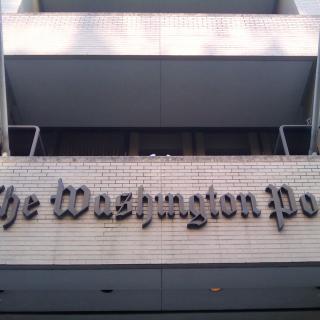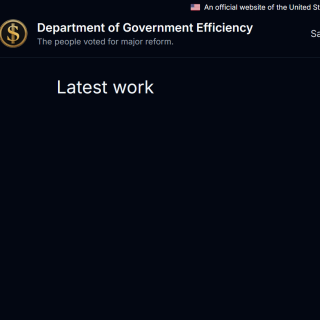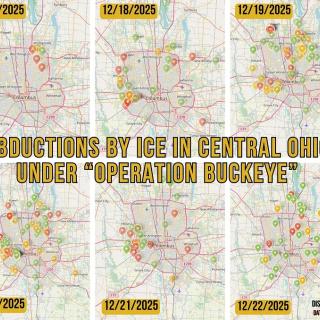ACTION ALERT:
OCTOBER 15—CRITICAL “WASTE CONFIDENCE” MEETING IN TOLEDO AREA
If you want to do one thing to oppose nuclear power this year, this is it. In June of 2012, a critical win in a lawsuit brought by a coalition of groups including the Sierra Club and the DC Court of Appeals, overruled the “Waste Confidence” decision of the U.S. Nuclear Regulatory Commission (NRC).
Since 1984, the NRC has maintained that it has “confidence” that a solution will be found for disposing of high-level radioactive waste -- defined as the used, irradiated fuel rods from nuclear power reactors. The NRC maintained that waste is a “generic” issue, so no entity could legally oppose a license or license extension based on the fact that waste could be a problem. Issues such as large amounts of waste accumulating on sites, or in overcrowded fuel pools, or in aged, deteriorated casks, or in areas prone to flood or earthquake -- could not be brought up.
With the court ruling, the NRC has halted all license proceedings that rely on Waste Confidence. This includes FirstEnergy’s application for a license extension at Davis-Besse.
Rather than appealing the court decision, the NRC drafted a revised Waste Confidence rule. Called the “Draft Generic Environmental Impact Statement” (DGEIS), it was released in September, 2013. The NRC will hold public hearings on the new rule in 11 cities. Meetings in Washington, DC, on October 1 and November 4 will be webcast.
SUBHEAD: Attend the NRC DGEIS meeting in Perrysburg on October 15
The Sierra Club is organizing for people to attend, to picket and to speak at this critical meeting. For talking points and updates, visit Nuclear Free on the Ohio Sierra Club website.
To carpool from Columbus or for more information, contact Pat Marida marida@wideopenwest.com. Location: Hilton Garden Inn, 6165 Levis Commons Blvd., Perrysburg, Ohio. Open house is 6-7 pm; meeting is 7-10 pm. We encourage people to pre-register, whether giving oral comments or not, at WCRegistration@nrc.gov or 301-287-9392. Include your name, affiliation or organization if appropriate, location of the meeting that you would like to attend, and let them know if you plan to present oral comments. Oral comments may be limited time wise, but longer written comments may be submitted as explained below.
Send written comments. The public has until Nov. 27 to send written comments. NRC has a direct link to the DGEIS and proposed rule, where there are also instructions for submitting comments online or via email.
Participate by phone. If you are unable to attend in person, the NRC is providing a webcast and a moderated teleconference line from its hearings in Washington DC. The dates are Oct. 1 and Nov. 14 from 2-5 pm. To listen to the meeting or to comment by phone, dial 1-888-603-9749 and provide the operator with pass code 5132332.
www.nrc.gov/waste/spent-fuel-storage/wcd/pub-involve.html
DAVIS-BESSE STEAM GENERATOR CHALLENGE: Loss and Victory
In May 2013, four groups working together -- the Sierra Club, Beyond Nuclear, Don’t Waste Michigan and the Citizen Environment Alliance of Southwestern Ontario -- filed a legal intervention with the U. S. Nuclear Regulatory Commission (NRC) challenging safety shortcuts and asking for a comprehensive license amendment hearing on proposed 2014 steam generator replacements at Davis-Besse. The Davis-Besse nuclear power reactor, owned by FirstEnergy, is located on Lake Erie east of Toledo. Its two steam generators each weigh 590 tons. A large hole must be cut in the containment building for their replacement, bringing up other issues of already cracked and compromised cement in the containment building. Terry Lodge, Toledo attorney, and Arnie Gunderson, nuclear engineer, have been working on the case as our experts.
Regulations require that if certain types of changes are made making replacement steam generators different from the original, a public hearing must be held. In spite of the fact that nine important changes are being made, the NRC’s Atomic Safety and Licensing Board (ASLB) ruled against the petition on August 12.
One of the contentions was that a new metal alloy being used in the replacement tubes, Incanel 690, expands differently. Expansion of the Incanel 690 in the tubes of replacement steam generators at San Onofre, California, caused rubbing and tube wear which in January 2012, after only two years of operation, led to the shutdown of the two reactors. On June 7, 2013, Southern California Edison announced their permanent closure.
The August 12 ruling was a disappointing but not unexpected outcome. The NRC has consistently sided with industry in cases brought before it. At San Onofre, NRC staff argued that Friends of the Earth was years too late in intervening; at Davis-Besse, NRC maintained that the coalition’s intervention was too early.
Nonetheless, our legal action has provided a major victory on a several fronts.
First, on August 7 the NRC put out a job posting for a reactor engineer to work on replacement steam generator issues at Davis-Besse and at Prairie Island, Minnesota. Second, the NRC just announced two future inspections for the Davis- Besse steam generator replacement. It is unlikely that either of these NRC actions would have happened without our intervention. Third, publicity has put the lack of NRC oversight in the public eye and has alerted other reactor sites where steam generators are due to be replaced.
Intervenors have the opportunity to file a new petition under Section 2.206 of the Code of Federal Regulations. While unlikely to have a better outcome, it would continue giving the NRC and FirstEnergy bad publicity and win in the court of public opinion.
Another group of intervenors is challenging FirstEnergy’s attempt to get a 20-year license extension, allowing the aging and brittle plant to operate until 2037. These two actions are having a synergistic effect.
Take the Pledge to Stop FirstEnergy. Stop FirstEnergy is on Facebook. Help us stop their promotion of coal and nuclear. AEP has a great 100 percent Wind choice. Check it out on the Public Utilities Commission of Ohio’s Apples to Apples Rate Chart.
CANADA’S DEEP UNDERGROUND DUMP, 1/2 MILE FROM LAKE HURON
Canada is moving along with plans for what they call a Deep Geological Repository (DGR). The Sierra Club calls it the DUD, Deep Underground Dump. Ontario Power Generation (OPG) has proposed to bury low- and intermediate-level radioactive wastes from 20 of their reactors in a burial site about one-half mile beneath the Bruce Nuclear Generating Station near Kincardine, Ontario. The waste would be placed within caverns carved from limestone rock.
There is no precedent for burying radioactive nuclear waste in limestone. The “very low-permeability” of the limestone bedrock asserted by OPG still means permeability, particularly in the geologic time frames that these wastes will remain dangerously radioactive.
The entrance to this radioactive repository would be less than one-half mile from Lake Huron. The implications of the possibility of the radioactive contamination of Lake Huron and other waters downstream, including Lake Erie, Lake Ontario and the St. Lawrence River, are frightening.
The State of Michigan’s siting criteria for the disposal of low-level radioactive waste prohibits any site located within 10 miles of Lake Michigan. Contrast this with the DUD at 1/2 mile. The State of Michigan was omitted from the impact area described in the proposal.
Members of our committee have written to the Canadian Nuclear Safety Commission (CNSC) opposing the dump, and will be giving oral testimony by phone and in person between September 16 and October 12. See our letter to the CNSC on the Ohio Sierra Club website.
URANIUM ENRICHMENT SHUTS DOWN AT PADUCAH
The U.S. Dept. of Energy’s Portsmouth/Paducah Project Office in Lexington, Kentucky, oversees environmental management at both the Portsmouth, Ohio and Paducah, Kentucky nuclear reservations.
The antiquated gaseous diffusion uranium enrichment plant operated by USEC, Inc. at Paducah was shut down in May 2013. The reason? Lack of continuing government bailouts. Billions of taxpayer dollars were used to build and maintain this enormous facility which originally enriched uranium for nuclear weapons and later for nuclear power reactors. Department of Energy bailouts continued for years after the U.S. Enrichment Corporation was privatized to USEC, Inc.
The Paducah plant used vast amounts of coal -- so much that it took nine coal plants at TVA’s Shawnee Station to produce two thirds of its electric needs. Paducah's electric bill jumped 50 percent in 2011, which contributed to USEC’s loss of $540.7 million that year. USEC’s capitalization (net worth) is now less than $50 million.
The Paducah plant used ozone-depleting Freon gas as the primary process coolant. This plant alone accounted for 70 percent of all U. S. Freon emissions each year it remained open.
U.S. PLANS CONSOLIDATED “INTERIM” STORAGE OF HIGH-LEVEL RADIOACTIVE WASTE
Starting in March 2010, the Obama Administration’s Blue Ribbon Commission on America’s Nuclear Future (BRC) met and heard testimony on the disposition of high-level radioactive waste (HLRW). HLRW is defined as irradiated fuel rods from nuclear power reactors. Because the government (read: taxpayers) agreed to take this material from the utilities that generated it, and because utilities are anxious to get it off their hands, a political (not scientific) solution was devised. In January 2012 the BRC gave its report recommending Consolidated Interim Storage (CIS) dispose of the waste. In July 2013 Senate Bill 1240 was introduced, recommending interim storage on the path to a permanent “repository” (dump).
• What permanent repository? After over 60 years of U.S. nuclear experimentation, no suitable place for permanent safe storage has been found. A suitable place to store radioactivity that will be lethal for millions of years may never be found.
• Interim storage, like plutonium, is forever. Sites that take it are likely to own it.
• Interim storage does nothing to solve the waste problem. And no one wants it in their back yard.
• S. 1240 effectively says the waste will be moved twice. Too cheap to meter?
• Interim storage can override rights of state and local governments to stop the building of facilities and/or transportation of waste in their locales.
• Interim storage will increase transportation risks. Transporting the 50,000 metric tons of high level nuclear waste on busy highways and railroads from 103 reactors in 31 states to interim storage sites will create added risks to public health and safety with inevitable accidents and spills, as well as expose the nation to terrorist threats.
The Sierra Club and antinuclear groups across the country are opposing S. 1240.
The Sierra Club and other organizations have signed on to Principles for Safeguarding Nuclear Waste at Reactors, called the HOSS (Hardened On Site Storage) Principles. These principles state that waste must be stored as safely as possible as close as safely possible to the site of generation.



